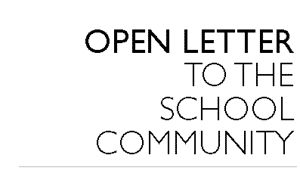
Diversity is an important yet controversial issue. The Diversity Committee’s
mission at SAIC is to try to ensure that our school is a diverse one, not just
in the sense that it reflects the right demographics, but also in the sense
that the different people from the diverse backgrounds interact with one another
so as to create an educationally sound and healthy community. To this end, one
of the most important things to keep in mind is an in-depth understanding of
diversity issues. Sadly, the F News issue of December 2002 contained a number
of letters [F News Question responses, p. 6] that reflected a partial and unclear
understanding of diversity. We, the members of the Diversity Committee, decided
to write this letter so as to correct any misconceptions of diversity issues
as we understand them.
1. A few letters reflected the worry that confining diversity to things such as skin color and gender is superficial, the idea being that skin color and gender in themselves do not mean much. This point is important, but it can be easily addressed. In an ideal world in which there is genuine and full equality between races and genders, skin color and gender might very well be, as the first point states, superficial. Unfortunately, we still live in a racist and sexist society, with much of the racism and sexism being covert. Because these still exist, people from different races and genders lead different lives and undergo different experiences from each other. In this respect, including race and gender within diversity — but not confining diversity to them — is important: it allows the individuals from different backgrounds to interact meaningfully with each other. While on the topic of what goes under the notion of diversity, it is important to stress that the Diversity Committee at SAIC does not confine diversity to race and gender. While we do not have a definition of “diversity,” we do use the term to refer to, in addition to race and gender, ethnicity, age, sexual orientation, religion, national origin, and class, among others.
2. A number of letters conveyed the idea that diversifying our school would somehow come at the expense of recruiting talented artists, be they students or faculty. The idea seems to be that to diversify our school is to sacrifice rigor in admitting and hiring good artists and teachers. But this would never be the case at SAIC, and certainly, as members of the Diversity Committee, we do not advocate admitting students and hiring faculty and staff just because they come from certain backgrounds. There is no incompatibility between trying to diversify student, faculty, and staff bodies, on the one hand, and maintaining excellent artistic and academic standards, on the other.
3. A related point raised in some of the letters is that diversity is, ultimately, not necessary for a good academic and artistic institution. The idea seems to be that what matters are students, faculty, and staff who are well qualified to perform their respective roles. We should admit students and hire faculty for their abilities and talents, rather than their ethnic and other diversity-related backgrounds. However, there are two important issues to keep in mind. First, when it comes to admitting students, faculty, or staff, the choice about what institution we want to have should not be between diverse, not-so-qualified students, faculty, and staff and non-diverse, highly able and talented student, faculty and staff. Rather, the choice should be between diverse and highly qualified students, faculty, and staff and non-diverse and highly qualified students, faculty and staff. Surely between these two options the former is much more preferable. Moreover, it is the former option that is the real point of diversity, and it is so because diverse student, faculty, and staff bodies, as a number of other letters mentioned, contribute to the education of the SAIC community. Coming into contact with students and faculty from backgrounds different from one’s own is a highly enriching and educational experience, be it through interacting with each other personally or through each other’s work. This brings us to our second issue. If we want to foster an excellent academic and artistic community, admitting good students and hiring good faculty from diverse backgrounds is to admit highly qualified people, precisely because diversity could often function as one important qualification. In other words, we should not pit one’s background against one’s qualifications. In many cases, a certain type of background could very well be a type of qualification. This point is no doubt controversial, but it should not be dismissed on the assumption — controversial in itself — that diversity and qualifications are at odds with another.
4. Another worry reflected in some letters is that there is no guarantee that even if SAIC is demographically diverse, that such diversity would translate into genuine interaction between the two groups. Now it is true that there is no guarantee that in a demographically diverse group there would be genuine interaction and cooperation between the diverse individuals. But having a demographically diverse group is one excellent way — indeed, even an essential way — to reach the more genuine type of diversity. Furthermore, and as stated in the first paragraph of this letter, the Diversity Committee is not simply concerned with demographics; it is also concerned, by using different means, of fostering a rich and robust interactive SAIC community.
Diversity should not be seen as a threatening specter haunting our lives. If approached correctly and sensitively, it is one of the best things that can ever happen to an academic and artistic institution, because it gives the institution the opportunity to create an environment which is more reflective of the world we live in.